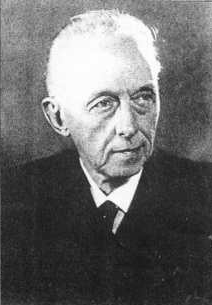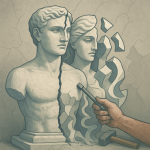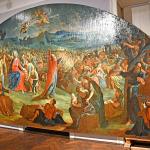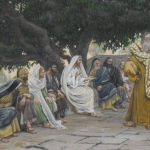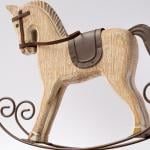Fran Saleški Finžgar (February 9, 1871 – June 2, 1962) was a Slovene writer, playwright, translator and Roman Catholic priest. Fran Saleški Finžgar was born into a poor peasant family in the Upper Carniolan village of Doslovče (a part of Žirovnica), in what was then the Austro-Hungarian Empire. After finishing primary education in the town of Radovljica, he attended secondary school in Ljubljana between 1882 and 1891, continuing his education at the theological college. He was ordained priest in 1894 and worked in various parishes in Upper Carniola and Ljubljana until 1936, when he retired. Finžgar started his literary career as a poet, but later turned to prose. He wrote novels in the Neo-Romantic style, depicting rural and small town life. He is best known for his historical novel Pod svobodnim soncem (“Under a Free Sun”) written between 1906 and 1907. The novel is set in the period of conflict between South Slavic tribes and the Byzantine Empire in the 6th century AD. He also wrote a number of plays, none of them as successful as his novel. He is also famous for his short stories and tales for children.
He was editor of the literary magazine Mladika and member of the Slovene Academy of Sciences and Arts. Finžgar was also a translator. Among other, he translated several works of the Austrian poet Peter Rosegger, whom he admired, into Slovenian. Finžgar was a close friend and personal advisor of the architect Jože Plečnik. When Finžgar served as a priest in the parish of Trnovo in Ljubljana, Plečnik was his neighbour. In the late 1920s, Finžgar commissioned the renovation of the Trnovo parish church to his architect friend. Politically, he was close to the Christian Socialist ideals of the Slovenian Catholic political activist and leader Janez Evangelist Krek. He was also an admirer and friend of the Social Democratic author Ivan Cankar, whom he even catered at his deathbed in 1918. During World War II, he collaborated with the Communist-led Liberation Front of the Slovenian People, which led him to some conflict with the then bishop of Ljubljana, Gregorij Rožman. He died in Ljubljana and was buried in the cemetery of Žale. His birth house in the village of Doslovče was transformed into a museum in 1971.
He was editor of the literary magazine Mladika and member of the Slovene Academy of Sciences and Arts. Finžgar was also a translator. Among other, he translated several works of the Austrian poet Peter Rosegger, whom he admired, into Slovenian. Finžgar was a close friend and personal advisor of the architect Jože Plečnik. When Finžgar served as a priest in the parish of Trnovo in Ljubljana, Plečnik was his neighbour. In the late 1920s, Finžgar commissioned the renovation of the Trnovo parish church to his architect friend. Politically, he was close to the Christian Socialist ideals of the Slovenian Catholic political activist and leader Janez Evangelist Krek. He was also an admirer and friend of the Social Democratic author Ivan Cankar, whom he even catered at his deathbed in 1918. During World War II, he collaborated with the Communist-led Liberation Front of the Slovenian People, which led him to some conflict with the then bishop of Ljubljana, Gregorij Rožman. He died in Ljubljana and was buried in the cemetery of Žale. His birth house in the village of Doslovče was transformed into a museum in 1971.
(From Wikipedia)

